
The Contextual Kits for T2CT have been designed to enhance thermal place preference studies...

The Contextual Kits for T2CT have been designed to enhance thermal place preference studies...
Discover our products
An easy way to objectively quantify the muscular strength of mice and rats, and to assess the...
Discover our products
The BIOSEB Spontaneous Activity Wheel offers an effective solution for quantifying rodent...
Discover our products
The BIOSEB Spontaneous Activity Wheel is an easy way to quantify rodent voluntary activity in...
Discover our products
The uncomplicated way to monitor rodent activity over several days from their home cage...
Discover our products
These small animal treadmills are used for forced exercise training and accurate testing of...
Discover our products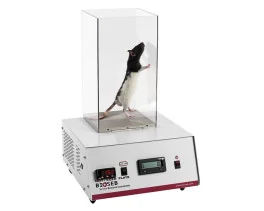
For testing animal's thermal sensitivity to pain resulting from exposure to heat or cold: the...
Discover our products
An operator independent test to study pain thresholds in rodents (mouse and rat) by assessing...
Discover our products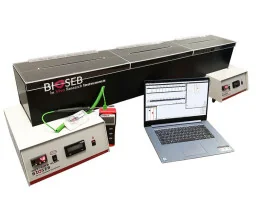
New and improved! The operator-independent Thermal Gradient Test used to show favorite...
Discover our products
The Contextual Kits for T2CT have been designed to enhance thermal place preference studies...
Discover our products
The advanced version of our Dynamic Weight Bearing Test for rodents (rats and mice) allows for...
Discover our products
An easy and non pain-inducing solution for assessing the level of discomfort (incapacitance) in...
Discover our products
A unique device that provides automated measurement of weight bearing and force distribution...
Discover our products![Dynamic Weight Bearing 2.0 – Postural Module [Add-on]](https://bioseb.com/733-home_default/dynamic-weight-bearing-20-add-on-postural-module.jpg)
Expand Your Analysis with Advanced Postural and Locomotor Calculations BIOSEB’s renowned...
Discover our products
A quick solution to determine the mechanical sensitivity threshold in rodents (mice and rats)....
Discover our products
As an electronic version of the classical Von Frey Filaments esthesiometer (or aesthesiometer),...
Discover our products
New ROBUST and modular cages to gently hold rodents (rats or mice) during nociceptive and...
Discover our products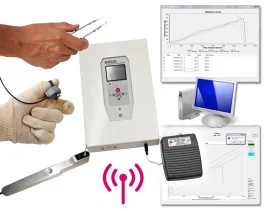
An economical and versatile solution for when flexible quantitative sensory testing (QST) is...
Discover our products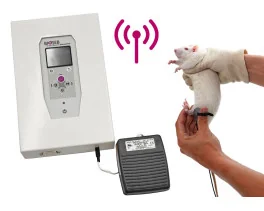
Dedicated to small animals, like mice and rats, Smalgo is a pressure-based analgesimeter...
Discover our products
Bioseb's version 5 of the Tail Suspension Test system, based on both strain sensors and video...
Discover our products
NEW ! A complete (hardware + software), dedicated and automated solution for the Elevated Plus...
Discover our products
A unique setup for the automation of the Open Field test for rats and mice : 3D-camera based...
Discover our products
Open-field test - ARENA ONLY - used to evaluate of animal's basal activity and its evolution for...
Discover our products
The new Forced Swimming Test system from Bioseb uses a dual approach: Combining a double input...
Discover our products
A brand new innovative setup for the automation of the Novel Object Recognition Test : 3D-camera...
Discover our products
Open-field test - ARENA ONLY - used to evaluate of animal's basal activity and its evolution for...
Discover our products
An entirely modular experimental enclosure designed to conduct operant conditioning procedures...
Discover our products
A standard experimental chamber for automated or manual assessment of conditioned place...
Discover our products
Real-Time Physiological Monitoring for Small Animals – Wireless & Non-Invasive The Bioseb...
Discover our products
The ETH-401 is a bridge amplifier for various transducers that provides four channels of...
Discover our products
The IX-118 is a fast 100 Khz, high-resolution data acquisition system suitable for most data...
Discover our products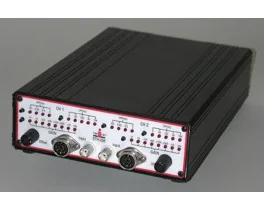
The ETH-256 is a 2 channels high performance, general-purpose life science research amplifier,...
Discover our products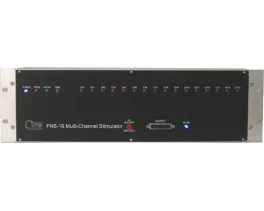
Full-featured multi-channel stimulator for neuromuscular stimulation
Discover our products
Discover BIO-FOODIS, the next generation solution for understanding animal feeding behavior with...
Discover our products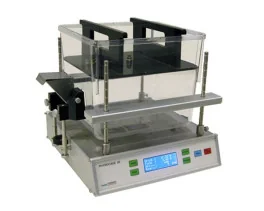
The OXYLET system - Physiocage is a modular system allowing the integration of respiratory...
Discover our products
Innovative and appropriate equipment for measuring food/liquid consumption and correlated motor...
Discover our products
An economical, high performance Oxygen and Carbon Dioxide Analyzer with sampling rates fast...
Discover our productsAn operator independent test to study pain thresholds in rodents (mouse and rat) by assessing temperature preference (thermal comfort zone) - a new tool for your analgesia/nociception research opening new fields of investigation, and an ideal solution for nociceptive and analgesic drugs screening. Now comes with a brand new software, allowing tracking activity and faster temperature transitions!
![]()
![]()
![]() Presentation
Presentation
Bioseb’s Thermal Place Preference Test, or 2 Temperatures Choice Nociception Test, is an operator independant test to study pain thresholds in rodents (mouse and rat) by assessing temperature preference (comfort zone) - a brand new tool opening new fields of investigation for your analgesia/nociception research.
As advised by A. MOQRICH, and published in Moqrich et al (Science 2005, 307: 1468-72), the Thermal Place Preference Test allows researchers to work on unrestrained animals (mice and rats) let free to choose their preferred position (comfort zone) between 2 compartments set at different temperatures. This behavioural assay will allow monitoring temperature preferences, nociceptive thresholds and state in the role of a given gene or a compound on these pain thresholds associated to cold and hot stimulation.
Unlike the cold/hot plate test, it is investigator-independent: using the traditional plates, an operator can measure the reaction time of an animal (mouse or rat) exposed to a certain temperature. The 'two Temperatures Choice Test' will return a nociceptive response without any action from the operator, and the obtained value is a temperature or a temperature range indicating the sensitivity of the animal (mouse or rat) resulting to the exposure to different stimulations (cold or heat).
You have the possibility to either observe one rat at a time or two mice simultaneously and independently, making the Thermal Place Preference system remarkably attractive for your analgesia research.
![]() Operating principle
Operating principle
This test is easy to setup: Using the optional automatic detection software: the operator defines the temperature of each zone. Once the temperatures are stabilized, animals are placed and the acquisition can be launched. The operator doesn't have to be present any more during the nociceptive experiment.
Using the optional automatic detection software: the operator defines the temperature of each zone. Once the temperatures are stabilized, animals are placed and the acquisition can be launched. The operator doesn't have to be present any more during the nociceptive experiment.
If not using the automatic detection software, temperatures have to be defined manually, and the operator has to measure the time himself.
During the thermal analgesia experience, the operator can visualize the position and movements of each animal on the screen. Raw data acquisition files are stored in a proprietary format to match GLP norms, while a .txt version of the file can be used for further analysis in MS Excel.
Data sheet
Number of publications:
For testing animal's thermal sensitivity to pain resulting from exposure to heat or cold: the Cold Hot Plate is an...
New and improved! The operator-independent Thermal Gradient Test used to show favorite temperature and thermal comfort...
The Contextual Kits for T2CT have been designed to enhance thermal place preference...
check_circle
check_circle